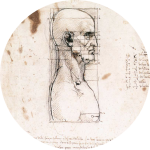 Cervical Myelopathy
Cervical Myelopathy
NATURAL HISTORY
The natural history of cervical myelopathies is not well understood.
The natural history of cervical spondylotic myelopathy. Matz PG, Anderson PA, Holly LT, Groff MW, Heary RF, Kaiser MG, Mummaneni PV, Ryken TC, Choudhri TF, Vresilovic EJ, Resnick DK. J Neurosurg Spine. 2009; 11 (2) :104-11.
ETIOLOGIES
**1. Constitutional Stenoses
Pure constitutional stenosis rarely is a cause of cervical myelopathy except in extreme cases of severe stenosis as in achondroplasia.It is more often a predisposing factor.
**2. Cervical Spondylosis
Spinal degenerative diseases start as early as the age of 20 years and constitute the main etiology of cervical myelopathy(25).They seem to be favored by the load on the spine in certain professions, previous trauma (rugby players) and occur earlier and more frequently in patients with abnormal movements (spasmodic torticollis disease, Tourette’s, choreoathetosis ...). Decompensation of congenital cervical blocks leads to early onset of degeneration from adjacent segment “overload”.
The initial lesions start in the disc and correspond to a reduction of the water content of the nucleus pulposus (nuclear desiccation), an increase of collagen, and a decrease in the mucopolysaccharides and chondroitin sulfate content. Anatomically, there are annular fissures which engage in displaced fragments of the nucleus. There is a loss of disc height (narrowing of the disc space). These anatomical changes alter the mechanical properties of the disc and are responsible for its degeneration (26, 76).
The degenerative cascade successively involves the disc ("soft" herniated disc, degenerative disc disease, herniated calcified "hard disc"), unco-vertebral joints (uncarthrosis), the facet joints (zygapophysial or facet joint osteoarthritis). The ligaments (posterior longitudinal ligament, ligamentum flavum) hypertrophy, lose their mechanical properties, thicken and calcify. All these lesions aggravated by osteophytic reaction reduce the size of the cervical spinal canal and are much more pathogenic than the constitutional narrow canal.
The lesions may sometimes be limited to one or two adjacent segments, at the most mobile segments of the lower cervical spine (C5/C6 and C6/C7), but sometimes extend through the whole sub-axial cervical spine (C3-C7).
Degenerative lesions can also be the source of static spinal disorders (loss of physiological lordosis, sometimes kyphosis or rarely degenerative scoliosis), being initiated by the loss of disc height, chronic instability or degenerative spondylolisthesis secondary to a change in the orientation of the joint surfaces. During flexion-extension movements, the ligaments that have lost their elasticity can jut into the lumen of the spinal canal, contributing to the compromise of the spinal cord (76).
**3. Ossification of the posterior longitudinal ligament(OPLL)
OPLL is a disease found mainly in the Far East and could correspond to a specific anatomic type of degenerative cervical spine lesion in Asian populations, suggesting a hypothetical genetic predisposition, corroborated by the increased prevalence in certain families and in identical twins (3).
Significant lesions of the posterior longitudinal ligament are observed in 11% of patients in the sixth decade in the Far East. The disease has an incidence of 1.4%. Few cases have been observed in Caucasian populations in Europe and the United States. The frequency of this disease seems to be underestimated.
Ossification usually starts behind the body of C5 and progressively spreads through the entire cervical spine in contrast to segmental (or localized) forms, discontinuous or continuous forms.
In the Japanese population, obesity and glucose intolerance significantly favors the ossification of the anterior and posterior longitudinal ligament (78).
The clinical course is unpredictable: 80% of patients followed-up over a period of greater than 10 years remain asymptomatic despite the presence of significant anatomical lesions, 20% will develop neurologic deficit and are candidates for surgical treatment (52).
The pathogenesis of OPLL remains uncertain: osteogenesis ensues from hypertrophied and hypervascular ligament when it "detaches" from the posterior surface of the vertebra by disc protrusions.
**4. Late posttraumatic forms
They should be differentiated from forms revealed during trauma, and related to unrecognized or poorly treated lesions: non-union causing chronic instability, mal-union reducing the diameter of the cervical spinal canal, post-traumatic discopathies usually localized to one injured segment.
**5. Other etiologies
Cervical rheumatoid arthritis affecting especially the upper cervical spine (atlanto-axial dislocation) and to a lesser extent the lower cervical spine may present with the clinical picture of cervical myelopathy (59). We can regroup rare neurologic complications which can cause narrowing of the cervical canal such ankylosing spondylitis, gouty tophi from the posterior joints and vertebral ankylosing hyperostosis (Forestier’s disease) or Paget’s disease. Myelopathies have been observed in patients on long-term dialysis due to epidural calcification (85).
 Encyclopædia Neurochirurgica
Encyclopædia Neurochirurgica

